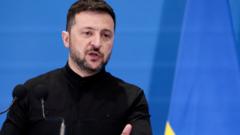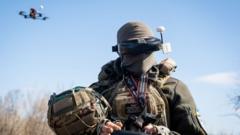**The incident highlights Ukraine's continued efforts to undermine Russian supply chains and strategic assets in the ongoing conflict.**
**Ukraine Claims New Strike on Crimea Bridge amid Ongoing Conflict**

**Ukraine Claims New Strike on Crimea Bridge amid Ongoing Conflict**
**Amid escalating tensions, Ukraine announces a third strike on the Kerch Bridge, a strategic link between Russia and Crimea.**
Ukraine reported on Tuesday that it successfully struck the Kerch Bridge for the third time, raising concerns about the ongoing conflict's impact on infrastructure in the region. The strike was executed by the Security Service of Ukraine (S.B.U), which announced the detonation followed months of strategic planning to plant explosives on the support structures beneath the water.
While the extent of the damage remains unclear, the S.B.U claimed that the explosion, equivalent to 1,100 kg of TNT, severely compromised the bridge's underwater pillars, putting it in a precarious condition. This recent operation comes just two days after Ukraine launched one of its most ambitious attacks within Russia, targeting a key strategic bombing fleet.
Russian state media reported that the bridge was temporarily closed to traffic following the explosion; however, reports indicated that it reopened by the afternoon, revealing the ongoing logistical and operational challenges faced by both sides in the conflict. The Kerch Strait Bridge, a critical 12-mile link, not only serves as a vital supply route for Russian forces in southern Ukraine but also symbolizes President Vladimir V. Putin's regime, having been inaugurated in 2018.
Previous attacks on the bridge include a truck bombing in October 2022, which caused significant damage and resulted in a fire that engulfed a passing train. After repairs, the bridge was again targeted with maritime drones aimed at its support pillars, illustrating the complexities and challenges of infrastructure security in wartime.
As the conflict continues to evolve, both sides remain locked in a struggle that will likely dictate resource allocation and strategic military decisions for the foreseeable future.





















